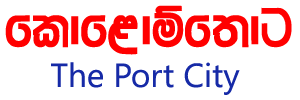The Pearl of the Indian Ocean – Sri Lanka, is an island rich in history and cultural heritage that have cascaded millennia. From agricultural methods and ayurvedic practices to the construction of temples and monuments, early islanders have passed down the knowledge of generations through practice and word of mouth. Today, these are still visible around the island and stand as early signs of a successful education system in the country.
Fast forward to the present, we see that those primitive knowledge-sharing techniques used throughout most of Sri Lanka’s history were eventually transformed into rows of desks confined to a room. The concept where a single teacher delivers a lesson to a seated group of 40 pupils was introduced to Sri Lankans through the arrival of foreign powers. Locals at the time witnessed the power of colonisers, and were left with the impression that their missionary education system was what made them superior. Hence, it was only a matter of time before formal ‘schools’ were established, and children were made to allocate a fixed amount of their day to a single classroom.
A country’s education system plays a crucial role in moulding the minds of its future leaders. Dr. Thilan Hewage and Dr. Tush Wickramanayake, experts in the fields of Education and Child Psychology respectively, were consulted to examine a few aspects of Sri Lanka’s current education system and provide us with their valuable insights on how it needs to adapt with an ever-changing world.
Sri Lanka’s ‘Free Education’ Reform
The concept of ‘free education’ was introduced to Sri Lanka in 1943 under Hon. C.W.W Kannangara, who envisioned freedom of access to education in the country – ‘nidhahas adhyapanaya’. Through his educational reform, all children would be given an equal opportunity to educate themselves irrespective of their financial background.
As much as this system has nurtured and produced some of the brightest professionals from various fields in the country, Dr. Thilan expresses that the motivation behind the concept has faded over the years. The general population has often taken it for granted and tends to accept education simply because it is handed to them free of charge.
When it comes to higher education, he emphasises that “there is a portion of students who enter university simply because it is the norm and what their households have dictated that ‘should be done’, and not because they have an interest of their own.” Similarly, some educators responsible for conducting lessons have shown a lack of enthusiasm and quality in the content delivered, believing that it should be the bare minimum as it is given free of charge. Highlighted here are only a few instances of how today’s mistranslated concept of ‘nomile adhyapanaya’ has emerged.
Lack of individuality in forced education
Learning from a textbook is not for everyone. “Education in Sri Lanka has been academically centred for the most part, and is seen mostly with parents – not the students themselves,” says Dr. Thilan. Unhealthy competitiveness enforced by parents from young ages for grade 5 Scholarship and GCE Ordinary Level Examinations has killed children’s natural creativity and given them the misconception that education is the way out of poverty.
Pressure from home in this manner has led to reduced participation in extra-curricular activities and learning beyond the walls of a classroom. Accordingly, students have been seen to grow up with a lack of basic social skills, common sense and self-confidence. In attempts to counter this, many countries are now adopting a primary education system of ‘beating your own mark’, as opposed to competing with other students at examinations.
Moreover, having an education forced on children has led to them attending school with resentment and frustration, resulting in an overall poor academic performance. From a teacher’s point of view, anger and impatience with children who are uncooperative and difficult to handle began the infamous use of punishment as a mechanism for discipline. Unfortunately, this is still seen in Sri Lanka’s schools today; and Dr. Tush explains that “it has created a waterfall effect with an increase in truancy and psychological disturbances such as fear, shame and sadness among children”. Zooming out, such setbacks in the country’s education system also span the country’s justice and health systems – evident in the mounting student depression and suicide rates, court cases, hospital reports, and counselling resources.
How can Sri Lanka Adapt?
As per Dr. Tush, one of the key areas Sri Lanka’s education needs to focus on is emotional experiences, covering areas such as mental health, sex education and personal development. This needs to be done with trained teachers and through a combination of textbooks and practical approaches. Despite this, she stresses that the taboos surrounding these topics need to be broken from as early as when children turn 8 years of age, starting from home – where their learning experience begins.
With the pandemic, Dr. Thilan believes that there will be no significant change to education in Sri Lanka. However, the country has been presented with an opportunity to abolish its traditional exam-oriented system and introduce a non-competitive environment where students are appraised based on completing homework, their attitude towards learning, class participation and continuous assessment.
He further explains that the meaning of the word ‘education’ is in itself ‘bringing out one’s creativity’. Therefore, a child’s first 5 years of formal education need to focus on literacy and numeracy through creativity – allowing students to think on their own, explore ideas and develop their own meaning of what it is to be ‘educated’. As American futurist R. Buckminster Fuller says, “we are all born geniuses, but it is the process of living that de-geniuses us”.
The post Sri Lanka’s Education System Under a Microscope appeared first on Pulse.
Source From Pulse.lk
Author: Johnathan Jansz
#SriLanka #News #lka
